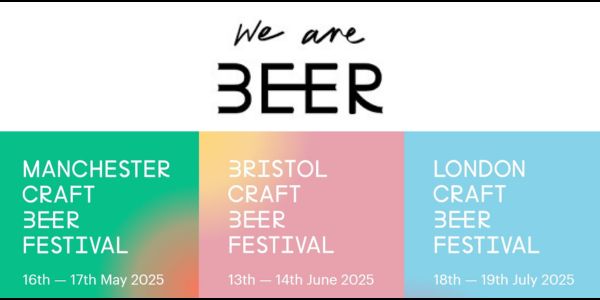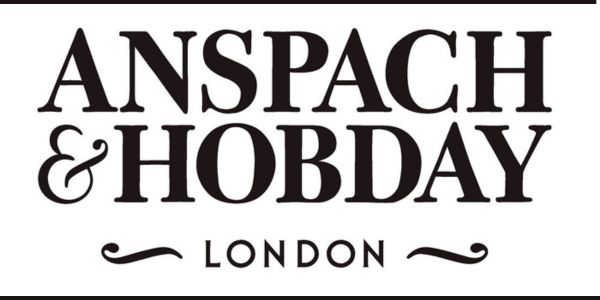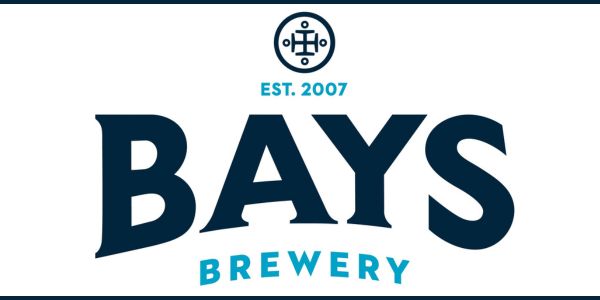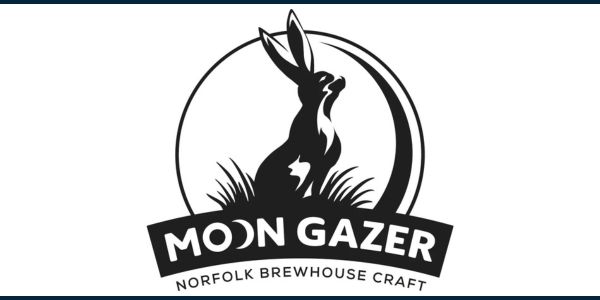On the eve of World Beer Cup 2025 registration, Lotte Peplow, the Brewers Association’s American craft beer ambassador for Europe, looks at how to become a beer judge and shares tips for brewers entering beer competitions.

World Beer Cup organiser Chris Williams with Lotte Peplow
Judging beer at prestigious international competitions is a real test of knowledge and skill, engaging all the senses. It’s also a unique opportunity to learn from leading brewing experts and network with the ‘rock stars’ of the craft beer world.
I’m often asked how I got into beer judging, and I’m delighted to share the following tips for anyone looking to put their sensory skills and brewing acumen to the test.
Education and knowledge is crucial
Courses are available to learn about beer and brewing, and become qualified. The Cicerone and Wine and Spirit Educational Trust (WSET) programmes both offer a thorough approach to the basics of beer knowledge, and offer different levels, dependent on your requirements.
Know your off flavours!
You won’t get far at the judging table if you don’t know your diacetyl from your DMS. You can buy off-flavour kits yourself, but they tend to be expensive. If you’re able to form a study group with like-minded individuals, practising off-flavours together is a good way to learn.
Learn to brew
Join your local homebrewing club and immerse yourself in the brewing process to better understand the nuances of temperature, time, and flavour. Start small — even a 10-litre kit will enable you to understand the basics of brewing and help you become a better judge.
CAMRA courses
CAMRA offers taste training courses which are accessible and beginner friendly. Those showing aptitude and enthusiasm may have the opportunity to join a regional tasting panel, where the role involves visiting breweries to sample and describe their beers.
Competition style guidelines
Familiarise yourself with these. They may differ according to the competition. Brewers use these guidelines to enter their beers, and judges evaluate and assess according to the style criteria within the guidelines.
Practice, practice, practice
Classic examples of every style are given in the Beer Judge Certification Programme (BJCP) Style Guidelines, allowing you to seek out those beers and practice tasting against the style criteria.

Once you’re confident in your beer judging skills, consider getting involved with the Society of Independent Brewers and Associates (SIBA), which hosts eight regional competitions across the UK for cask, keg, and bottled/canned beers. Regional winners advance to the national competition in March. To participate as a judge, approach the competition organiser, highlighting your experience and qualifications, and express your interest in joining the judging panel. Additionally, your local homebrew club may run competitions and require judges.
Beers submitted to international beer competitions are judged blindly against other entries based on their ability to meet criteria outlined in style guidelines, like those produced by the Brewers Association, BJCP, or those they define themselves.
The number of categories varies according to the competition. SIBA competitions have up to 15 categories, while the World Beer Cup, the largest beer competition in the world, held annually in America, has 110 categories! Style guidelines include the appropriate appearance, aroma, flavour mouthfeel/aftertaste, and overall impression. For bigger competitions (like the World Beer Cup which received 9,300 entries in 2024), beers may be judged against hundreds of other entries in one category, eg American IPA, and go through multiple rounds. Those selected for a medal are deemed to be the most exemplary and outstanding in their style.
Winning beers play a pivotal role in shaping the beer industry, celebrating quality and raising standards for everyone. Judging a competition like the World Beer Cup offers valuable insight into the skill and craftsmanship of brewers worldwide. It’s both a great honour and privilege to be part of such an event.
Tips for brewers
- Be sure to follow the style guidelines when submitting beers to a specific category. Many excellent beers are disqualified because they don’t meet the category criteria. For example, barrel-aged beers are not suitable for the dessert/pastry stout category and should be entered elsewhere.
- It may seem obvious, but always send samples of your very freshest stock. Batches can vary, so taste each batch before submitting samples for judging to ensure you’re entering the best quality beer you can.
- You’ll have a better chance of winning in categories with fewer entries. For example, in the World Beer Cup, classic British styles like English-style brown ale, brown porter, or sweet stout typically receive far fewer entries compared to more popular styles like juicy/hazy IPA or West Coast IPA.
- Most competitions provide feedback from the judges explaining why a beer didn’t advance. Take note of these comments and use them to refine and improve your entry for future competitions.
- Don’t be disheartened if your beer doesn’t win a medal. The more prestigious the contest, the tougher the competition, making it more challenging to secure a win. Keep refining and re-entering.
Breweries are invited to compete on the global stage and register for the World Beer Cup 2025 between 11th November and 13th December 2024. Winners will be announced at the annual Craft Brewers Conference, in Indianapolis, from 28th April to 1st May next year. Find out more at worldbeercup.org.
About the author
Lotte Peplow is the American craft beer ambassador for Europe for the Brewers Association and is based in London. She is a certified Cicerone, BDI accredited Beer Sommelier, beer writer, author, beer communicator, international beer judge, homebrewer, and beer lover.










